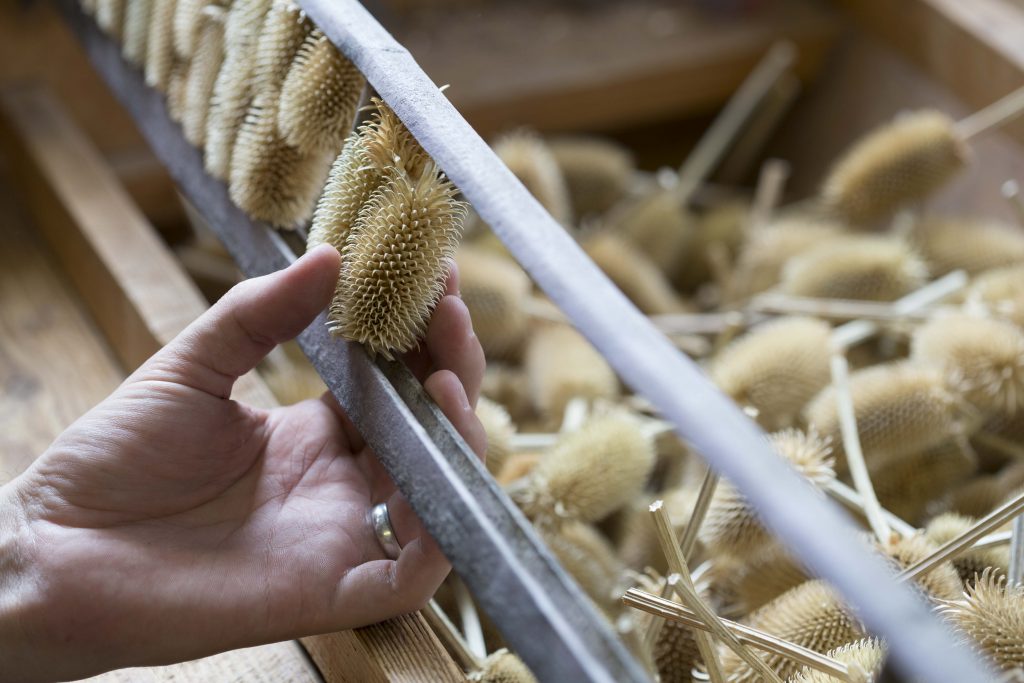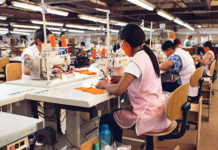Article republished with the kind permission of UK Fashion & Textiles (UKFT)
Simon Cotton, CEO of Johnstons of Elgin, on the importance of coming together as an industry and relying on your networks to help make difficult decisions during the Coronavirus outbreak.
I run Johnstons of Elgin, which is the United Kingdom’s largest textile employer. We operate manufacturing sites in the North and South of Scotland with both weaving and knitting, and have a fully vertical operation from fibre to finished garment. We employ around one thousand people, manufacturing for the world’s top luxury brands as well as for our own label. I also sit on the board of UKFT and Chair the Scottish Textile Industry Leadership Group.

Running any business is never easy, but this is certainly the most challenging period I have ever experienced in my business career. Just a few weeks ago life was continuing pretty much as normal. Now our whole operation is in its third week of lockdown and almost all of our workers are furloughed or working from home. We have reduced demand, no production, no retail and very few staff still working.
Each decision we took to get to this point felt painfully hard at the time, but looking back seems straight-forward. First, we deliberately reduced efficiency through physical changes and creating breaks between shifts. Then we closed our retail operations and sent all retail staff home. Then we closed manufacturing. They were difficult decisions and they were fast decisions, but they were never decisions I made alone. Taking the decisions collectively meant that we considered every aspect before acting. Collective decisions also acted as an excellent check and balance as, at this moment, my views are inevitably coloured by the last news report or social media post I read.

I am fortunate to have an extremely strong management team working with me. Despite that, I reached out to UKFT and I spoke widely with contacts in other businesses. I have sat in on countless video and teleconferences and listened to as many experts as I can. I would urge any textile business owner, however large or small, to rely more heavily than ever on their network and to use organisations like UKFT for expert advice. It will not only help you make better decisions, but it will also help relieve some of the burden of responsibility, which I know rest very heavily when your decisions affect both jobs and lives.
We have found it extremely helpful to consider the current crisis in phases, and we have now passed through the “safer working” phase into the closedown phase. As you all know, there is significant support available from the government, particularly through the Business Interruption Loan Scheme and the Job Retention Scheme. These schemes are superficially excellent, but understanding the detail of exactly how they will apply is very difficult, as the information supplied by the government so far lacks the necessary detail. We are seeing lawyers disagree with other lawyers, as they try to fill in the blanks of how these schemes will operate. No one should be embarrassed about feeling overwhelmed by the confusion which exists. None of us have the information we need to make perfect decisions. We have made the best estimates we can based on the expert advice we have taken, but I am sure some of those interpretations will turn out to be incorrect.

So much is uncertain in this phase, that it is tempting to avoid planning altogether and take each day as it comes. I think that would be a mistake and we have made careful, but unavoidably approximate, cash flow projections based on different scenarios about when we might return and what demand there will be. We also looked at profit and loss but, in this situation, managing cash is far more important and will determine if a company survives or not. Much as we may not want to face up to some of those scenarios, it is crucial that we have looked at them, understood where the critical points are and have a basis for informed discussions with our lenders.
During this phase we are working hard to stay in touch with customers and consumers. There are opportunities in ecommerce but we are being very sensitive about how we approach these. Our social media engagement levels are at record highs and our brand followers have a particular interest in our human stories, about our history and our people. Sometimes those engagements turn into orders but more often, they simply keep our brand connected to those who will form our customer-base when normal life resumes. We also talk to our trade customers as much as we can, despite the fact that there is limited information we can share at the moment. There is also limited information many of them can give to us on their own future demand, as they go through their own challenges.
The next phase will inevitably be to restart operations. We have no idea of knowing when that may be, but we plan to take this also in phases, with a very small core team preparing the ground work for at least two phases of return. As with the close down process, those decisions will be debated extensively but quickly and decisions will be made collectively. This phase presents even more dangers than closing down, as we need everyone to be comfortable that they are returning to a place which is as safe as it can possibly be. If we move too early we risk damaging employee goodwill or making the health crisis worse and we may lose the opportunity the Job Retention Scheme brings to save costs which we may not need. If we move too late we risk letting down customers or losing them.
Following restart we will enter our recovery phase. In this phase we anticipate cancelled and postponed orders, as well as orders which are urgently needed. Good planning and customer relationship management will be critical and production efficiency will suffer, as we push and pull orders to fit our capacity and meet customer needs. It will be a busy time as we all emerge from the enforced idleness of lockdown.
We then face whatever the new normal might be. Although this is largely unknown at the moment, we can already see some of the factors which may come into play. Will we enter a prolonged recession or depression? How will workers who have been working from home for weeks on end want to dress when they come to the office? Will international travel patterns be changed in the mid-term and long-term? Most importantly, how will retailers and brands unwind their stock positions and repair their balance sheets over the next few years.
Into this mix we can add the health and mental health of staff; risk of bad debts; risk to supply chains; currency and raw material volatility and the risks and uncertainty still associated with Brexit. We take comfort in the 223 year history of our company in surviving the Napoleonic wars; the industrial revolution; two world wars; several floods and one major fire. When we look back on this it will make for another colourful chapter in our history book but right now, it is an incredibly fast moving and multi-faceted challenge.
Article republished with the kind permission of UK Fashion & Textiles (UKFT)

Subscribe To Our Newsletter
Join our mailing list to receive the latest news and updates from our team.














